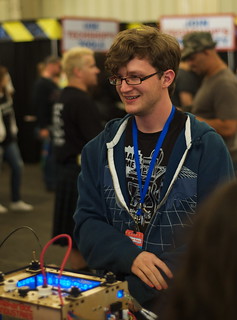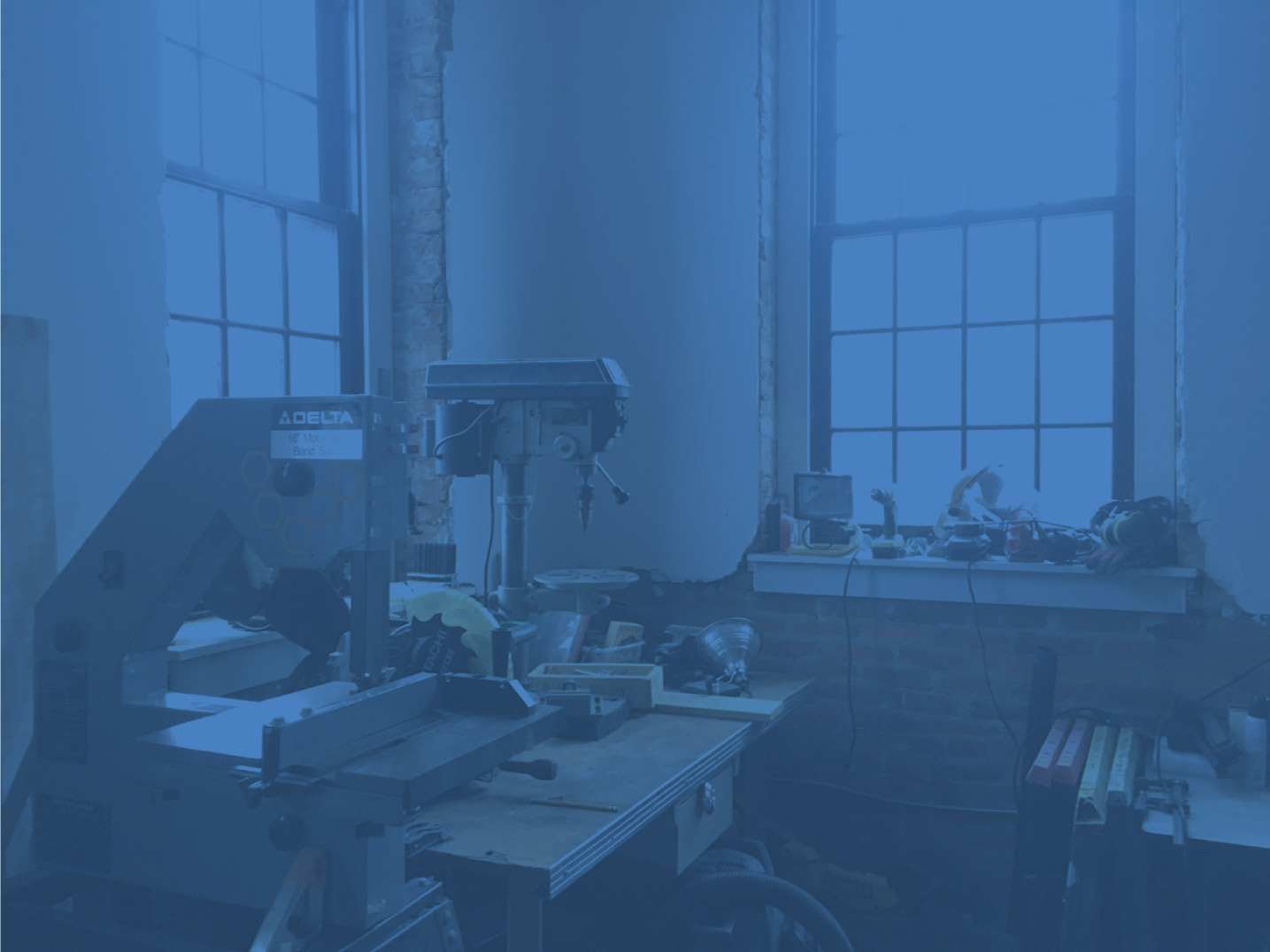I met Zach Hoeken Smith at one of my first Hive76 events. I donated to the pledge drive to buy a MakerBot Cupcake CNC and extruder. Once the drive was successful and 3DPO built, Hive76 held a workshop to learn how to design and print with SketchUp and the MakerBot. Our instructor was MakerBot co-founder Zach himself. Afterwards, everyone went out to West Philly for some Ethiopian food. It was a nice time. I haven’t seen him since, so I was surprised to hear from fellow member Jordan Miller that Zach had left Makerbot and was living in China. I reached out to Zach for a chat and here’s what I learned about my favorite hardware innovator.
Maker History

Zach has been an active part in the development of the RepRap project for many years. In 2007, he was introduced to the concept of Open Source Hardware (OSHW). OSHW is a growing trend in manufacturing where the designers release all of the files needed to replicate the object once it’s up for sale. This allows customers and supporters to build upon the product, and maybe sometime in the future, provide crowd-sourced support. Once he realized the potential OSHW had to revolutionize manufacturing, he thought, “whoa that’s everything.” Since then everything he has worked on has been released onto the web in some form for others to build upon. One of his most successful OSHW designs was the RepRap Generation 3 electronics that eventually controlled the Mendel and MakerBot’s Cupcake CNC. Zach has been making bootstrapped 3D printers, or RepStraps, starting 5 years ago. He says you can comb through old email threads and see his “total n00b” struggles to get a machine going.
At some point after a few startup failures, he began looking for a few new friends and found them in MB co-founder Bre Pettis and other smart nerds in NYC. They eventually founded the famous hackerspace NYCResistor in Brooklyn. Once they secured a space, Zach brought in his RepStrap stuff to show off and hack on. He also got a RepRap Darwin kit and assembled it at NYCR, but they didn’t function too well. After some successive failures, and fortuitous access to a laser cutter, Zach, Bre and the third co-founder Adam had an idea to make their own RepStrap kit. There are others that have done the history of MB, and none better than Bre himself. MakerBot is now one of the most successful 3D printer companies around today, but for Zach, it “didn’t end on a good note.”
Chinese Vacation
Zach moved to China about a year ago, I assume to help MakerBot’s supply chain. But these days, Zach spends more time running up mountains than running a supply chain. After his break with MakerBot in May, he has been traveling around, exercising and eating well. Zach he got the inspiration for this creative reboot from Bunnie Huang:
“The coolest piece of hardware you’ll ever own is your body, and if that’s not working well, there’s no hope for anything else. Once I’m done with my aimless wanderings, hopefully I’ll have a better idea of what’s next.”
via MAKE magazine
If he is not feeling the best physically, he won’t be the best mentally for his next big thing. Zach is on a much needed vacation in order to explore a bit and play around with old ideas left on hold. One old project he wants to pick back up are the Keyboard pants. “The world needs keyboard pants” he says.
Falling Out
The story of how Zach left is one that has been told a millions times. It came down to a basic struggle for who’s running the company. In his words, he “got pushed out.” Unfortunately, this happens to a lot of founders. Bill Gates and Larry Ellison are exceptions while the vast majority of founders routinely get displaced. From Inc.com:
“Robert Adelson, a partner at the Boston-based Engel & Schultz law firm who represents entrepreneurs in this situation, says founder succession happens most often when the venture capitalist—who has most likely invested with the company under the stipulation that he or she can remove the founder if necessary—feels the company needs to scale faster.” via Inc.
Zach is quiet on the details, but it could be this push to scale big or the style of development at MB that made the divide. Makerbot has a history of developing new products in secret. The Thing-O-Matic and Replicator were complete surprises to the printing community when they debuted. This is odd behavior in a community that is so accustomed to sharing every tiny development. Whatever MakerBot is working on new will be a surprise too. Zach found this closed development frustrating, when after working on a project for a year and not sharing any details, MB would release it, get some feedback, and Zach would go back into the lab to toil away for another year.
MakerBot also just raised $10M in VC funding and that amount of money changes the work dynamic. The people with the money call the shots. Like I said, Zach did not divulge any details so we can only speculate that this was one of the divisions that led him to leave. When I asked him what different direction he wanted to go in, he couldn’t say, but recalling his parting, Zach said “I thought I was going to be working there for the rest of my life.”
Bright Future in China
Zach’s home for now is Shenzhen, a place he calls a maker paradise. He says it’s incredible living in a different country, especially one that has rapidly industrialized. Shenzhen has grown from nothing to 10 million people in 30 years, and the best part is, they are almost all focused on manufacturing.
The ingredients for anything you want to make come from China, and they are sold by the bucket in SEG electronics market. This building has stalls with suppliers for any component you can think of. There’s even a dedicated LED building. Even though you can get anything you want, there is language barrier to overcome, so Zach is learning mandarin. In the meantime, he has a trick. After all, part numbers are part numbers, so he researches on Digi-Key, finds a few compatible components, then asks around around in the market for parts.
So what’s next for Zach? He’s got a “bajillion ideas” and Shenzhen is place to make them. He describes how amazing it is when you can look up an Alibaba supplier and then go visit them in person. Whatever project he starts next, he wants to be active during development. During his RepRap and early MakerBot years, the process of blogging, getting feedback, and directly engaging the user base was really exciting for him. But is it possible to do product development even more open than it was at MakerBot? Can he go beyond simply publishing a data dump of source code and actually collaborate with the people who will use the design?
When discussing his love of 3D printing, Zach made a comparison to compilers, critical pieces of software design. Well, “3D printers are the compilers of the hardware age.” They actually make the things you think up. But he doesn’t want to stop at plastic parts, which are OK for fancy shapes and toys, he has been eying up the world of CNC mills. When you use a mill and make a part out of metal, you get a high precision part for the small investment of materials, design, and robot time. The possibility of making a useful object is much higher when using a CNC mill.
Also, he has shed some light on the purpose of the RepRap project itself. RepRaps are biological entities in the eyes of RepRap founder Adrian Boyer, and they are designed to show that with terms like “vitamins” and “self-replicating.” But it’s hard to cram all that self-replication into one machine. You’ll never be able to extrude the metal parts of an extruder. Even making electronics on a RepRap is still tricky.

But a new way of thinking about biological machines is to consider the whole lab as self replicating, and the machines as organs, born out of specialization. Each machine could make some part to reproduce another machine. Having a full lab of open source hardware machines is fundamental to the future of makers. Once Zach is refreshed from his well-deserved vacation, maybe we’ll see a new line of maker-friendly CNC mills, all controlled by keyboard pants.


Awesome post
++
This is a nice piece of history, thanks for the post.
(I must said I had the same conclusion about replicating labs, some peoples want to make 2-in-1 cnc-reprap, but it’s more resilient/practical to rely on an ecosystem of manufacturing)
>> You’ll never be able to extrude the metal parts of an extruder.
Never say never.
You can certainly extrude metals, and the science of changing the properties of one structure into another is not magic.
True, but you can’t extrude PLA with a PLA extruder. It was a temp thing/
“I thought I was going to be working there for the rest of my life.”
That’s a tough one. Been there done that, but you’ve got to let go and move on. If you don’t it will kill you.
I live in Shenzhen, and met Zach one day for lunch. I do believe I’m the one who told him about the Digikey trick.
The secret is that all of Digikey’s product pages are dual language. Change two small things in the URL and you can print out the product page in Chinese. You can then wave that around in the market. Me, I print out both the Chinese and English on the same side, rotated 180 degrees from each other. Then I can plonk it on the counter of a stall and we can both read it and work out where we’re going.
The details on the Digikey sheet become the spec that the supplier has to meet. Doesn’t have to be same brand, but it does have to meet the specs.
Works well.
I live close to Shenzhen – just sent Zach a message – hoping to connect with him soon – he seems like a cool cat. Hope he’s got those keyboard pants finished as I could use a pair of those bad boys hahaha
Zach is definitely a cool guy, I grew up with him in Iowa and worked with him on one of his first projects ever (a CMS, he rebuilt the wheel,) and he’s always been visionary and inspiring to work with. I hope you got to meet him and hang out, Mark.
You may want to update the link of the OSHW definition to http://www.oshwa.org/definition/